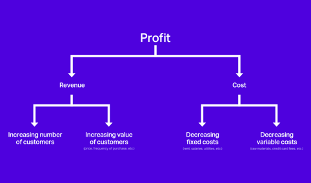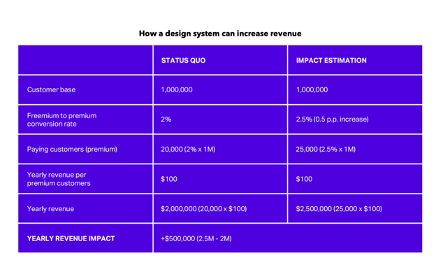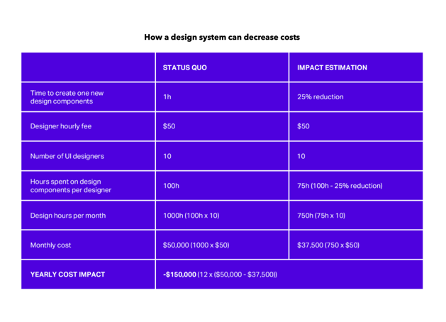As designers, we are experts of user experience, design aesthetics, and stakeholder needs. The part we are typically unsure of is understanding the real business value of what we do best. Because of this, we often end up selling ourselves short, especially in company meetings. If we took the initiative to educate ourselves about the value our design brings, we would communicate better with our business colleagues. We would know how to speak to them in their language—numbers, statistics, and metrics. Most importantly, we would have the ability to increase the approval of our design projects which will ultimately create more profit for our organizations.
Companies like Apple, Tesla, and Google are living proof that design drives growth. As designers, we truly harness the ability to use design to make a difference in the companies we work for. The first step is understanding the business value of design. Once we have this down, we can learn to how to communicate that value to our business-minded colleagues.
We know that design has real business value; however, 66% of CEOs don’t understand what their senior designers do. This leaves design’s concrete benefits to be an enigma for most. This is a real problem and we can solve it. In the world we live in today, there are many resources we can use to obtain and analyze data to show the value of our work.
Identify design metrics
Satisfaction Ratings + Usability Assessments = The Impact of a Design
These are just two of the many metrics designers can use to measure the business value of their designs. Let’s take the example of a video game company that found a small increase in the usability of its home page was followed by a dramatic 25% increase in sales. They also found that further enhancements had almost no additional impact on the user experience. These metrics show the video game company that design had an impact on sales, and the research helped the company avoid further cost and effort.
As designers, we take user research and create customer journey maps. These journey maps enable us to discover and understand customer pain points and possible sources of delight. It is engrained in us to obtain and analyze this data prior to the ideation phase of a product design. Although this practice is common in the design world, only 50% of companies conduct user research before generating their first design ideas or specifications. Intuition gained from customer journey mapping provides concrete, first-hand customer insights and observational data. As designers, every meeting we attend is an opportunity of us to advocate on behalf of the user using these design insights and metrics.
Put the metrics in context
John Powell wisely said, “communication works for those who work at it.” If we want to achieve success in our design careers, learning to communicate with our business friends is essential. How do designers quantify their work? Designer Alen Faljic teaches a three step method:
- Define a business lever
- Estimate the financial impact
- Communicate with hypotheses
To illustrate this method, let’s use the example of a designer presenting project proposal for company-wide design system. We know that our fellow business colleagues are ultimately concerned about one thing: profitability (decreasing costs and increasing revenue). Our purpose is to estimate and communicate how the money spent on creating a design system today will increase profitability in the future. First, we will use a profit tree to how our design system can decrease fixed costs and increase the number of customers.

We can identify these numbers using statistics, assessments, and metrics provided by product managers, salespeople, or the accounting team. Using these, we can create prototype with numbers to estimate the financial impact.


Together, these two hypotheses conclude that implementing a design system could equate to a $650,000 opportunity.
Now that we have defined our business levers and prototyped with numbers to estimate the financial impact, it’s time to communicate our hypothesis. If presented correctly, these numbers will make sense to our more business-minded colleagues. However, we should remember Jim Rohn’s advice, “effective communication is 20% what you know and 80% how you feel about what you now.” We have to believe these estimations and present them with confidence.
As we continually learn and understand the business value of design, we will naturally become better communicators of that value to those who may not see the true power of design. It is our responsibility as designers to communicate our work’s value instead of waiting for our fellow businesspeople to figure it out on their own.